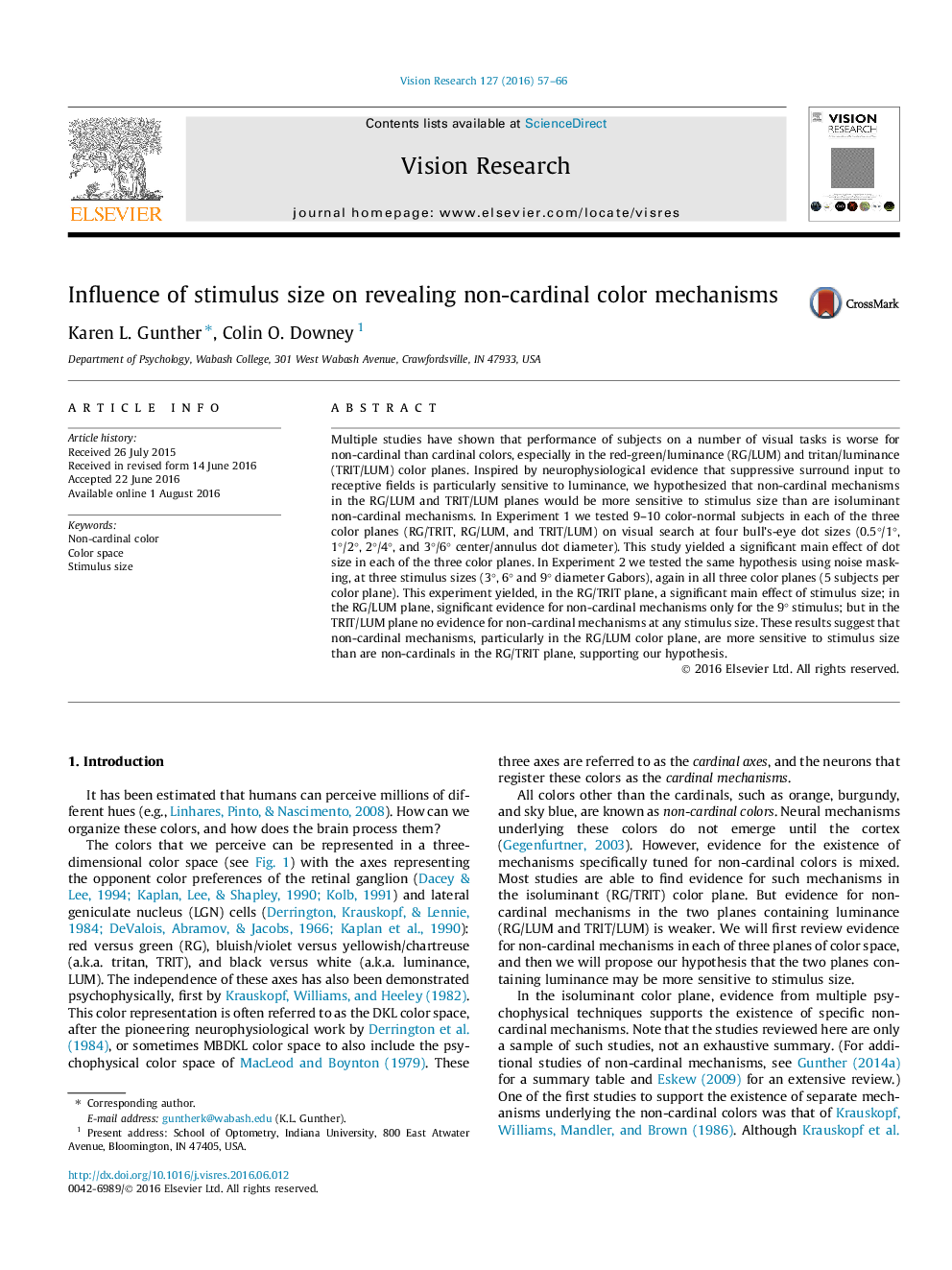| Article ID | Journal | Published Year | Pages | File Type |
|---|---|---|---|---|
| 6202874 | Vision Research | 2016 | 10 Pages |
â¢Stimulus size affects non-cardinal color perception.â¢May explain weaker non-cardinal color performance in RG/LUM color plane.â¢Visual search, 4 sizes, yielded largest effect of stimulus size in RG/LUM plane.â¢Noise masking, only largest of 3 sizes supported RG/LUM non-cardinal mechanisms.â¢Less strong evidence for effect of stimulus size in TRIT/LUM color plane.
Multiple studies have shown that performance of subjects on a number of visual tasks is worse for non-cardinal than cardinal colors, especially in the red-green/luminance (RG/LUM) and tritan/luminance (TRIT/LUM) color planes. Inspired by neurophysiological evidence that suppressive surround input to receptive fields is particularly sensitive to luminance, we hypothesized that non-cardinal mechanisms in the RG/LUM and TRIT/LUM planes would be more sensitive to stimulus size than are isoluminant non-cardinal mechanisms. In Experiment 1 we tested 9-10 color-normal subjects in each of the three color planes (RG/TRIT, RG/LUM, and TRIT/LUM) on visual search at four bull's-eye dot sizes (0.5°/1°, 1°/2°, 2°/4°, and 3°/6° center/annulus dot diameter). This study yielded a significant main effect of dot size in each of the three color planes. In Experiment 2 we tested the same hypothesis using noise masking, at three stimulus sizes (3°, 6° and 9° diameter Gabors), again in all three color planes (5 subjects per color plane). This experiment yielded, in the RG/TRIT plane, a significant main effect of stimulus size; in the RG/LUM plane, significant evidence for non-cardinal mechanisms only for the 9° stimulus; but in the TRIT/LUM plane no evidence for non-cardinal mechanisms at any stimulus size. These results suggest that non-cardinal mechanisms, particularly in the RG/LUM color plane, are more sensitive to stimulus size than are non-cardinals in the RG/TRIT plane, supporting our hypothesis.
